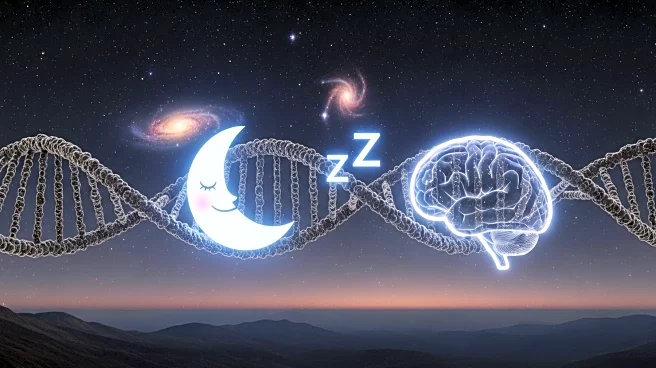What's Happening?
Recent research conducted by the Wellcome Sanger Institute has revealed that harmful genetic mutations in sperm increase as men age, potentially affecting the health of their offspring. The study, published in Nature, utilized ultra-accurate DNA sequencing to analyze sperm from 81 men aged 24 to 75 years. Findings indicate that disease-causing mutations rise from approximately 2% in younger men to 3-5% in older men. This increase is attributed to a phenomenon known as 'selfish selection,' where certain mutations gain a reproductive advantage during sperm production. The study highlights the genetic risks associated with paternal age, particularly concerning neurodevelopmental disorders and inherited cancer risks.
Why It's Important?
The implications of this research are significant for understanding genetic inheritance and the health risks posed to children born to older fathers. As paternal age increases, the likelihood of passing on harmful mutations also rises, potentially leading to a higher incidence of genetic disorders. This research underscores the importance of considering paternal age in reproductive risk assessments and opens avenues for further exploration into how lifestyle and environmental factors may influence genetic risks. The findings could lead to improved strategies for genetic counseling and public health policies aimed at mitigating these risks.
What's Next?
Further research is needed to explore how the accumulation of sperm mutations translates into health outcomes for children. Scientists aim to investigate the role of environmental and lifestyle factors in shaping genetic risks passed to future generations. Additionally, the study suggests potential advancements in reproductive risk assessment, which could lead to more informed decisions for prospective parents. The findings may also prompt discussions on public health strategies to address the genetic risks associated with advanced paternal age.
Beyond the Headlines
The study highlights a broader understanding of genetic selection dynamics within sperm, revealing a hidden genetic risk that increases with paternal age. This research challenges previous assumptions about the protection of the male germline and emphasizes the dynamic nature of genetic selection. The findings may influence cultural perceptions of paternal age and its impact on offspring health, potentially leading to shifts in societal norms regarding family planning and reproductive health.










